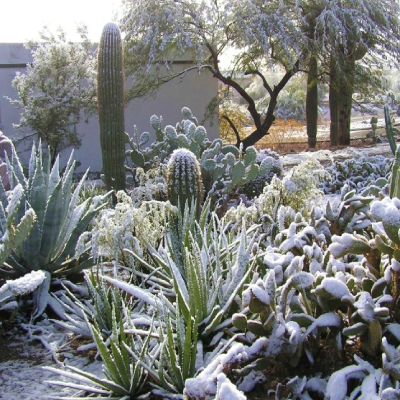
In much of the country, winter is a time of quiescence, but in the Sonoran Desert, especially if we have rain, we see action from both plants and animals. (In the following, most links go to other ADI articles for more detail on each subject.)
December:
Our own Christmas cactus, the pencil cholla, has bright red fruit that persist through the winter, providing food for many animals, as do the orange berries of the netleaf Hackberry tree which will be ripening in December and January.
Brittlebush, with its silvery-gray leaves will sport yellow, daisy-like flowers if there is rain.
Creosote bushes will sprout shiny new leaves.
Curve-billed thrashers will be establishing their mating territories and cactus wrens will be beginning construction of their breeding nests.
January:
Desert mistletoe, a parasite on many trees, will be in fruit. The tiny, sticky, red berries were eaten by both the Seri and O’odham Indians. The flavor ranges from sweet to sour depending upon the host plant. These berries also attract Phainopepla (Silky Flycatcher), a cardinal-shaped bird. The males are shiny black with a white wing patch that is conspicuous in flight. Females are dull, grayish brown. Both have red eyes.
Mountain lions will feed well on deer distracted by mating ritual.
February:
This is the time that many desert shrubs begin to bloom. Late in February, if there has been sufficient rain, desert wildflowers such as Mexican gold poppy, lupine, and owl clover will begin their show.
Costa’s and Anna’s hummingbirds will establish territories around backyard feeders and attractive plants. The male birds will display for females. The very pugnacious Rufous hummingbirds may show up mid-month and dispute territorial claims from the Costa’s and Anna’s. Gila woodpeckers will begin their noisy drumming to mark their territories. You may also hear the soft call of Great Horned owls as they begin their mating season.
The winter is our second rainy season. Unlike the often violent and capricious summer monsoon, the winter rains are gentle and soaking. When the jet stream dips south, it brings in moisture from the Pacific.
All that is a prelude to the flowers of March and to April, when the Palo Verde trees turn the desert golden

